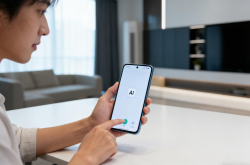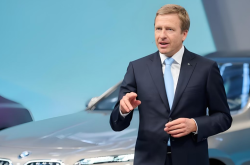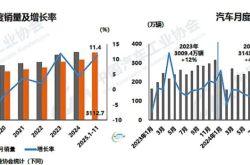Apple's Design Future: Navigating Post-Williams Leadership
![]() 07/11 2025
07/11 2025
![]() 649
649
Can Apple reclaim its design glory?
On July 9, Beijing time, Apple issued a concise yet significant press release: Jeff Williams, the long-serving second-in-command and current Chief Operating Officer, will step down this month (retiring by year-end). Prior to his departure, he will gradually transition his responsibilities to Sabih Khan, Senior Vice President of Global Supply Chain, who will succeed him as COO.
This announcement stirred considerable buzz, not only because Jeff Williams has been a pivotal executive at Apple for over a decade but also because he was widely perceived as Tim Cook's successor. Since joining Apple in 1998, Williams has spearheaded the supply chain development of iPod, iPhone, and Apple Watch, playing a crucial role in expanding Apple's health business. Within Apple, he epitomizes execution and embodies an extension of Cook's management style:
Focusing on reliable supply chains, timely product delivery, and maximizing operational efficiency.
Following Jony Ive's departure in 2019, Jeff Williams "assumed" leadership of the design team, becoming the top figure overseeing Apple's industrial and software design. However, Williams's dominance in design, often dubbed "Tim Cook 2.0," has left many designers and Apple fans uneasy.

Photo/Apple
Since Ive's exit, Apple's design team has undergone significant upheavals. During this period, both industrial and software designs have faced numerous controversies. These structural changes occurred under Williams's tenure as design leader.
However, amidst the "retirement" of Apple's COO and potential Tim Cook successor, I am more concerned about the future trajectory of Apple's design. According to Apple's announcement, Sabih Khan will not oversee the Apple design team or Apple Watch business; instead, Jeff Williams will continue to manage these areas until his official retirement, at which point the design team will report directly to Cook.
Yet, for Cook, who is not known for his focus on "product design," it seems improbable that he will genuinely lead Apple's design direction.
In the latest iOS 26 Beta 3 release, Apple subtly introduced significant visual adjustments to the "Liquid Glass" interface: the translucent glass texture is now less pronounced, replaced by a more blurred and thicker "frosted glass" effect.
Although Apple did not explicitly mention this change in the update log, numerous developers and users have discerned that this "rollback" underscores Apple's reentry into controversy and compromise in its latest visual language experiments.
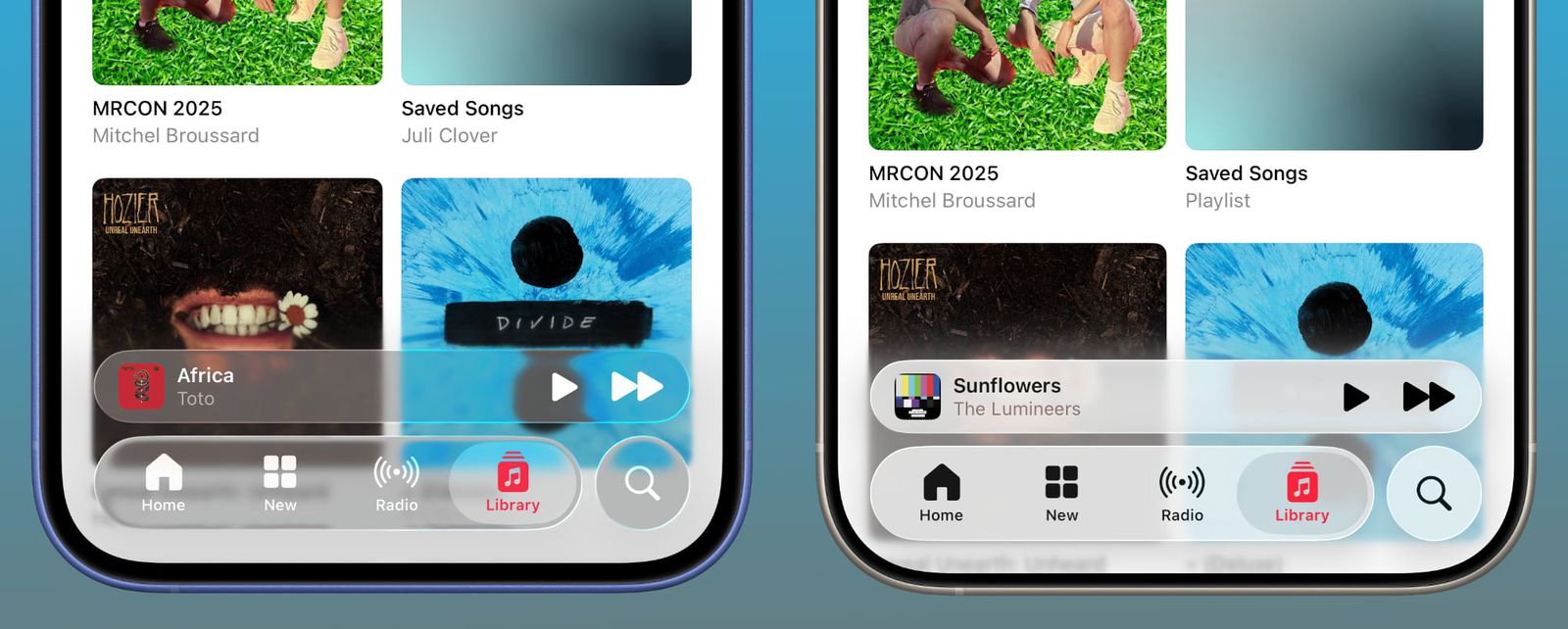
From left to right: beta 2, beta 3, Photo/X
Debuting at this year's WWDC, "Liquid Glass" was described as "flowing like glass, natural like liquid," embodying Apple's most ambitious system visual refresh in recent years. Its core design philosophy aimed to create a unified mimetic aesthetic across the entire iOS interface through advanced environmental mapping and transparent textures. This style briefly evoked memories of the iOS 7 "frosted glass" era but with more complex technical implementations and smoother visual effects.
However, this seemingly elegant design quickly became embroiled in a tug-of-war between practicality and aesthetics. While some users praised Liquid Glass for its eye-catching appeal and representing a "long-awaited sense of Apple design," numerous feedbacks highlighted that excessive transparency compromised text readability and interface clarity.
In content-dense Notification Center and Control Center, the overly floating background actually hindered usability. Some developers even complained that without transparency adjustment capabilities, small teams struggled to design compatible interfaces under Liquid Glass. The "concession" in Beta 3 signifies an unspoken compromise:
Apple is quietly steering design back to a more "safe" and "secure" realm.
This shift is not coincidental. Over the past five years, Apple has indeed undergone drastic changes in design dimensions, particularly during the post-Jony Ive vacuum period, which marked a turning point in Apple's design trajectory. The once proud aesthetic and interaction philosophy have lost confidence, even beginning to exercise restraint.
In 2019, Jony Ive officially announced his departure from Apple to found the independent design firm LoveFrom. This design master, who transformed iMac, iPod, iPhone, and even Apple Park into iconic products, left a substantial void. Taking over the industrial design reins was his deputy, Evans Hankey, a relatively low-profile manager with a technical background.
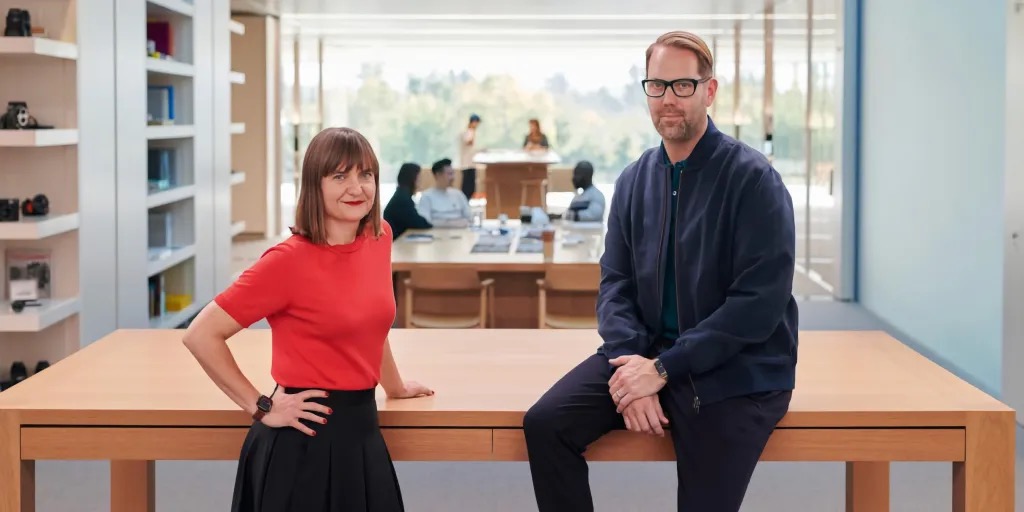
From left to right: Evans Hankey, Alan Dye, Photo/Apple
During Hankey's tenure, Apple maintained industrial design continuity but made minimal breakthroughs in new product forms. By late 2022, she quietly departed, becoming one of the shortest-tenured design leaders among Apple executives. The ensuing vacuum period lasted half a year, leaving Apple's industrial design team leaderless.
It wasn't until 2023 that Molly Anderson was internally promoted as the new head of industrial design, yet she still lacks the Senior Vice President (SVP) title and hasn't become the dominant design voice. Meanwhile, Alan Dye, who once led the Apple Watch interface and now oversees software design, remains but has often been criticized – designs such as Apple Music, the iOS home screen, and system icons have faced frequent scrutiny, with users and developers questioning whether Apple still prioritizes content-centric interface logic.
A widely circulated sentiment suggests that after Jeff Williams took over design leadership, Apple's design department transformed more into an "execution department" than a "creative department." Without Jony Ive's strong aesthetic and philosophical guidance, Apple's design team resembled a gear aligned with the supply chain and operational efficiency rhythm, becoming controllable and quantifiable but gradually losing its "soul".
After Jony Ive announced his departure from Apple, the Industrial Designers Society of America (IDSA) interviewed industrial designers. One noted that regardless of Apple's design team's excellence, if Jeff Williams and Cook, lacking a design vision or passion, solely focus on the "bottom line," then Apple's design risks mediocrity.

Photo/Apple
Today, from the toned-down Liquid Glass to the increasingly conservative iPhone design (with the iPhone 15 series making only corner adjustments and the iPhone 16's camera control key generally deemed "鸡肋"), to the long-standing lack of an SVP-level design leader, Apple's systemic design issues are increasingly hard to ignore.
This is not an individual product issue but a systemic problem – Apple's design is losing the direction it once proudly boasted.
Although Apple's announcement clarified that after Jeff Williams steps down as COO, the Apple design team will report directly to CEO Cook, for those familiar with Apple's management style, this seems more of a transitional arrangement than a strategic shift. Bluntly put:
Cook is unlikely to become the leader of Apple's future product design.
In fact, Cook has never concealed his distance from product design. He has repeatedly stated that he is not a product genius like Steve Jobs. Upon assuming the CEO role after Jobs' death, Cook chose to let Jony Ive continue leading design rather than personally involving himself in product details. His strengths lie in supply chain, operations, and execution, evident from his decades-long career.
In summary, Cook can lead Apple to become one of the world's most successful business companies, but he has never been seen as a "product expert" – he is a secure CEO but hardly a "soulful" product leader. This time, Cook taking over the design team is likely just a temporary measure.
On one hand, Apple Watch and the Apple Design team will remain under Jeff Williams's responsibility until year-end. On the other hand, Cook is nearly 64 years old, and his succession plan within the company has been in the works for some time. More crucially, within Apple, there's another candidate more likely to dominate product design direction – John Ternus.
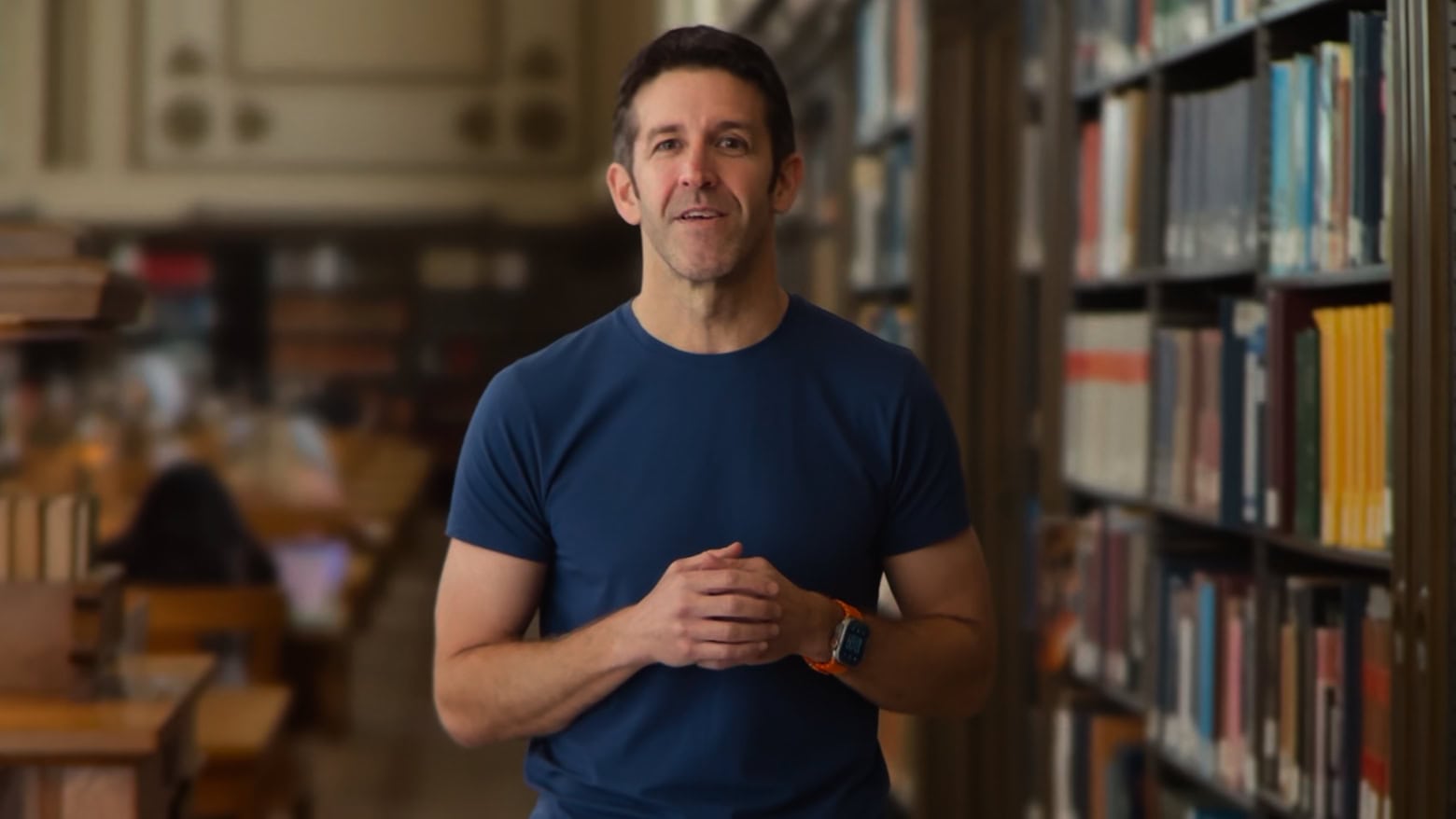
John Ternus, Photo/Apple
John Ternus may not be a household name, but he is undoubtedly one of the key figures behind Apple's products. He joined Apple in 2001 and has long worked in product design and hardware engineering teams. In 2021, he was promoted to Senior Vice President of Hardware Engineering, gradually taking charge of hardware development for key products like iPhone, iPad, Mac, and AirPods, becoming one of Apple's most important product leaders.
More importantly, as iPhone, MacBook, and other products are poised for their largest design "refresh" in recent years, Ternus may already be orchestrating numerous critical decisions behind the scenes. This synchronized series-wide change rhythm is a rare "big move" for Apple in recent years, likely driven by Ternus's team in terms of engineering implementation and industrial consistency.
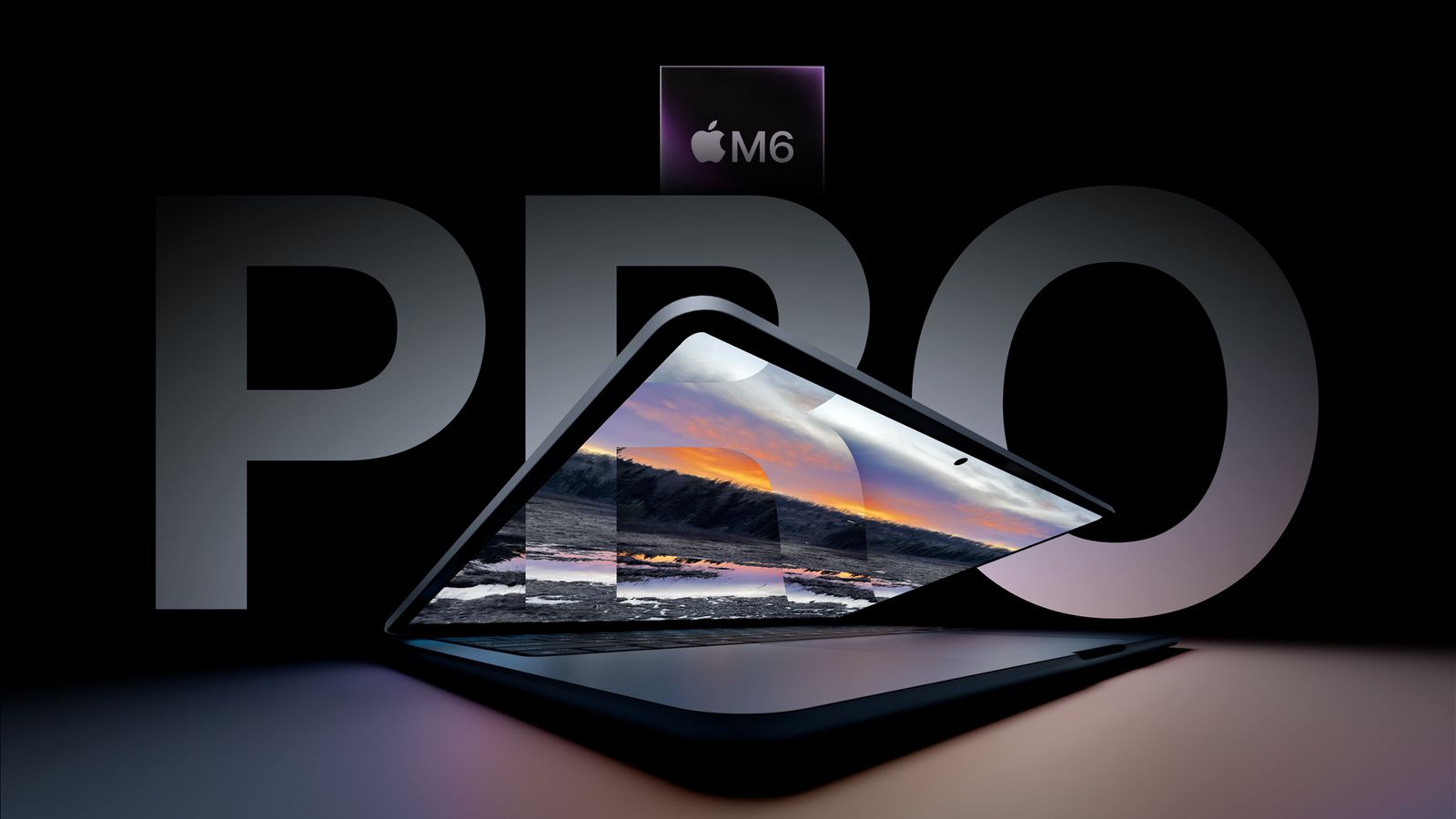
User-made renderings, Photo/X
Ternus's strength lies in his understanding of both design and engineering. Originating from the product design team, he is well-versed in the design process and simultaneously leads the entire hardware engineering team, possessing a comprehensive perspective from "concept to mass production." Additionally, he played a crucial role in the Mac's transition to Apple's self-developed Silicon chip, and his influence is evident in many groundbreaking advancements across Apple's product lines.
However, Ternus is clearly not a leader akin to Steve Jobs or Jony Ive. According to Bloomberg, internal evaluations of Ternus emphasize his calmness, low-key demeanor, aversion to power struggles, and rare public expressions of design philosophy. This means that while he may be an exceptional coordinator and executor, it remains questionable whether he can become the "creative hub" driving the next generation of Apple's design language.
Will Apple's design reclaim its greatness?
Apple's products have never been merely functional tools; they have also represented the aesthetics of their time. Today, as the design voice gradually fades within operational logic, we can certainly understand Apple's obsession with "stability," but we cannot help but miss the Apple that exuded design prowess from iMac to iPhone.
After Jeff Williams retires, Apple's design stands at a new crossroads. Will it continue to be inward-looking and conservative, or will it reignite its passion for design? Perhaps the next great Apple product should not solely rely on algorithms to predict demand but should start with a bold and pure design vision.
Apple design, Cook, iPhone, MacBook
Source: Lei Technology
Images in this article are from: 123RF Licensed Image Library Source: Lei Technology


